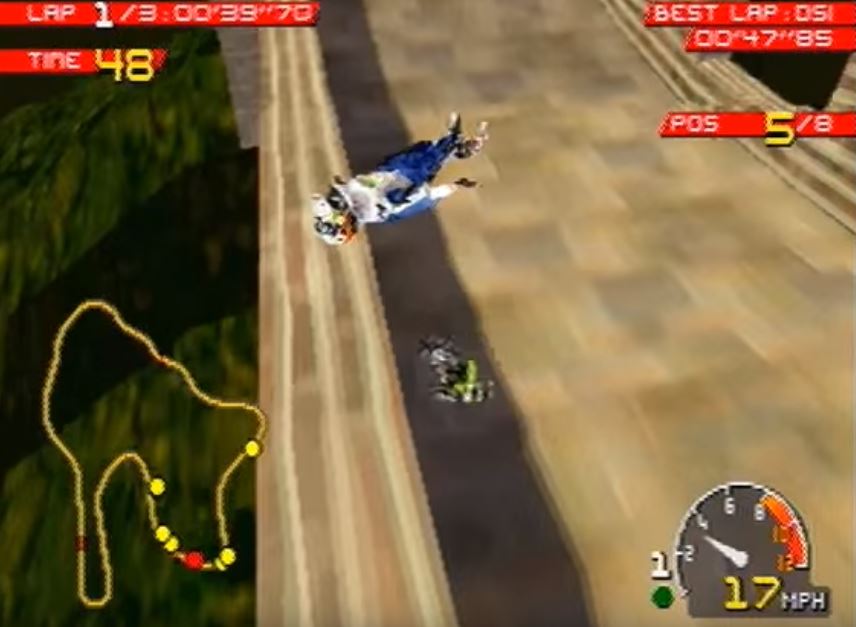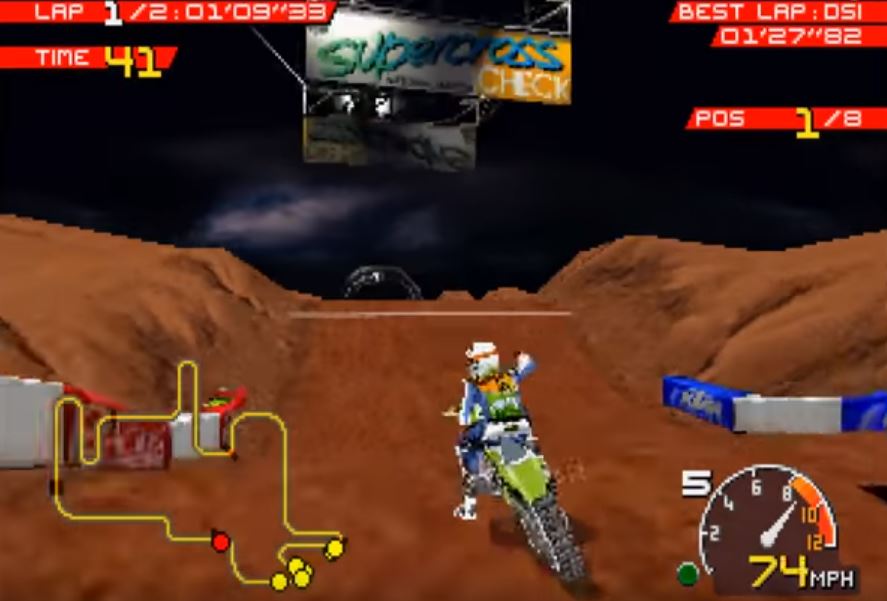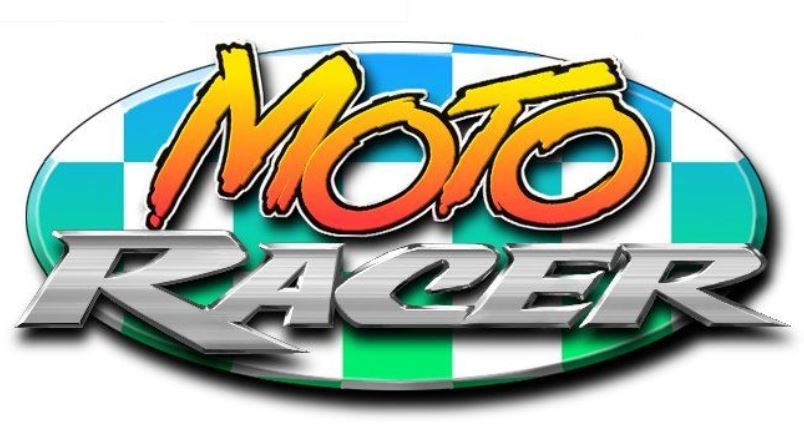PlayStation Top 10
After the announcement of the PlayStation Classic I decided to look back at my personal Top 10 PlayStation games to see if they hold up. Each gets a minimum of 3 hours of game play before I compare how I remember the game and how it plays now.
The rest of my Top 10 games are:
- Castlevania: Symphony of the Night
- Grandia
- Crash Warped
- Resident Evil
- Quake 2
- Metal Gear Solid
- Final Fantasy VII
- Lunar: Silver Star Story Complete
- Lunar 2: Eternal Blue Complete
Motoracer – Then (1997)
Motoracer is an arcade style racing game. I don’t like realistic racing games. Many consider Gran Turismo the greatest PlayStation racing game, but I’ve always found it frustrating and dull. Beautiful but the opposite of fun to play. Intense speed and crazy courses are what I crave. Motoracer fills that need for speed (yes, I did that on purpose)
Motoracer gives you both street and dirt bike races. Street bikes are all about careening down the course at break neck speeds. The courses are less crazy, but the speed means even a gentle bend on the road needs careful turning. Dirt bikes are the crazy courses, taking you to the Great Wall for one, with jumps and tight turns.
The single player swaps between Street and Dirt bikes each course. Shifting focus means you have to grow your skills with both types of rides. There’s no choosing one over the other, unless you go multiplayer only. Yes, this is a two player split screen game!
Motoracer released to good reviews and strong sales that turned it into a franchise. The only other title in the series I’ve played is Motoracer 3, which I hated. It was closer to a simulation than the original’s arcade style. Thankfully that was back in the days where I could return the game and get something else.
Motoracer is the only PlayStation racing that remains in my collection. I had other games back in the day, but they were sold or traded off. I could never part with this one. It was too much fun. The question now is, does it hold up or is it best remembered and not experienced? Let’s find out.

Motoracer – Now (2018)
Controls make or break a racing game. This is true of any game where reaction time is important. Shooters, racers, fighters, and platformers all demand quick reflexes. Myst can be played at your own pace, but poor controls will ruin the immersive experience of a racing game. Does your bike do what you want it to when you want it to?
Motoracer remains tight and responsive even compared to modern racing games. Dual Shock support helps with that. D pads were never ideal for racing. Analogue support makes for smooth cornering. Anytime I slammed into a wall or opponent, it was entirely my fault. Knowing the game is doing what you want, even if it’s wrong, creates a fun game play loop.
Each bike style handles differently. Turning is smoother and speed greater with the street bikes. However, at high speed a smooth turn still has a wide angle. Precision turning is key, or you’ll find yourself tossed to the ground. Dirt bikes are slower, making turning quickly easier, but added jumps impact when you can safely turn. Each bike has its own style.

Wheelies are the last major control element of the game. R1 pulls your bike onto its back tire, giving you a speed boost. The trade off is turning reduces to almost zero. Unable to turn, it’s easy to hit a wall. Falling can easily take you from first to fifth in seconds. Risk versus reward. Speed boost during a straight away, but you have to land it before the turn come up.
Track designs take advantage of the risk/reward wheelie system. Jumps and sudden corners after straightaways are common. Like any racing game, knowing the track is the key to success. Your first run won’t be your best. Knowing when to wheelie, how to approach a turn, and which jump gives the best air all factor into winning the race.
The tracks do suffer from a common PlayStation era problem, invisible walls. The PlayStation had limited hardware, and could only render so much land for the player to traverse. Containing movement was often done by placing barriers within the world. In the early days of 3D gaming, those barriers were often invisible walls. Game play was restricted, but not the visual design. You can see a wide area, but can’t enter it.

An invisible barrier lines the edge of the track, even if there’s a grassy area on the other side of the barrier that a bike could drive across. Hit the barrier head on and it’ll knock you down. Grazing the barrier slows you, but recovering is faster. The dirt bike makes this extra complex, as the walls bend with corners. There are jumps that will send you flying through the air in a straight line, while the track turns below you. You go straight into the invisible wall and drop like a rock.
“There goes bike #1 off the last jump of the course,” says the racer announcer. “Sails through the air like a majestic gazelle, and slams head first into the sky. Terrible luck colliding with solid air. Thrown clear of his bike, he bounces across the track. What a terrible sight…wait, he’s magically appeared back on his bike to continue the race. What a guy!”
Despite this annoying barrier to game play, the arcade style of racing absorbs the ridiculous nature of the invisible better than a simulator would. Flying down a track at 175 km/h and slamming into solid air is so over the top it doesn’t kill the experience. It’s an annoyance, but nothing to break the game.

Speaking of hardware limits, Motoracer’s 3D engine shows its age. Bikes and racers riding them are a blocky mess. The low polygon count extends to the tracks as well. There’s nothing visually spectacular here, even when compared to other PlayStation games.
What does work is the color and texture design. Simple colors and basic textures create an almost cell shaded style. By keeping the texture work simple, it allows the low poly look to feel clean. It’s not beautiful, but it’s not an eye sore after so many years.
Even compared to its contemporaries, Motoracer had a simple visual design. One advantage to that design, is the rock steady frame rate going with it. I don’t have a frame counter, but it felt like 60 fps. Whatever the framerate, there’s never a hint of slowdown. Lower quality visuals backed up with perfect frame rate is a decent trade off.
Music and sound effects are adequate. They get the job done, but you won’t be humming any of the tunes an hour later. The biggest highlight is the way the sound effects change is you’re close to a wall or in a covered area. It’s nothing special, but I always appreciate environmental effects like that.
I’m genuinely surprised how well Motoracer holds up after all these years. Controls are good, track design is fine, and the frame rate is solid. It’s not the best racing game going anymore, I’d rather play Burnout Revenge, but it still holds its place in my personal PlayStation top 10. Try it for yourself. $10 on eBay is a steal or download the PC version from Steam.
Motoracer Retrospective review
Summary
Pros
-Fast racing game play
-Two forms of bikes to race
-Fluid controls
Cons
-Invisible walls
-basic graphics
Play it!

